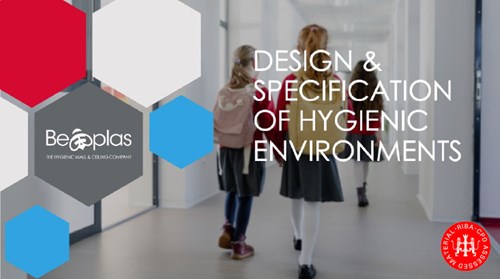
'They Think it’s All Over…But it Never Is’
Book our New RIBA Assessed CPD on taking a rational, holistic approach to design and specification of hygienic environments in the post-pandemic era.

Istock
“Memories fade but the scars still linger…”
Memories Fade - Tears for Fears
It’s a fact that humans tend to forget bad times and remember good times. It makes sense for understandable reasons – from psychological to evolutionary. Multiple studies conducted by different research teams across people of different racial, ethnic backgrounds and in age from late teens to early 50's consistently show very similar results – that in general, people experience more positive events in their lives than negative.
In the article "Life Is Pleasant -- and Memory Helps to Keep It That Way!"* by W. Richard Walker, Winston-Salem State University and colleagues, the authors discuss two reasons for this effect:
- Pleasant events outnumber unpleasant events because people seek out positive experiences and avoid negative ones.
- Pleasant emotions have been found to fade more slowly from our memory than unpleasant emotions.
It involves a process known as minimisation. We seek to regain balance in our lives by aiming to return to a ‘normal’ level of happiness, by minimising the impact of life events. The process - which occurs biologically, cognitively, and socially is generally stronger for negative events than for positive.
"This implies that there is a tendency to 'deaden' the emotional impact of negative events relative to the impact of positive events. Such deadening occurs directly because people are motivated to view their life events in a relatively positive light."
Dr. Walker.
If you feel like me, then you – and the rest of the world -would like to forget COVID as if it never happened and return to ‘normal’ life. Even now, it is beginning to feel like a bad dream as my mind tries, with all its might, to downplay the memories of that prolonged, anxiety-ridden, and painful time. More fortunate than many and leaving aside the fears of illness and mortality, the most painful was being separated from loved ones. In particular, a vulnerable 97-year-old mother and a grandchild not held in my arms until he was 14 months old.
It’s understandable that our brains feverishly work to fade these memories into a background hiss, like an old vinyl record when it reaches the end of the side.
But it is critical that we do not overcompensate and forget that the pathogens are still very much out there. Whilst we may have largely overcome the scourge of Severe Acute Respiratory Syndrome Coronavirus 2 (SARS‑CoV‑2), it is still closely monitored for another dangerous and threatening mutation. But there are still the ever-present bacteria, fungi, and viruses of myriad types that continue to cause harm locally and occasionally globally.

During the COVID-19 pandemic, hygiene became the key priority in every aspect of life. As we move into the post-COVID era, it is critical that we do not forget the terrible price humanity paid. As architects and specifiers, we owe it to their memory. As Tears for Fears put it succinctly – ‘Memories fade but the scars still linger’.
We can learn that good hygiene standards should remain a priority, in work, healthcare, residential accommodation – any place where people are in close contact.
In a post-pandemic era, a rational holistic approach to the design and specification of hygienic environments becomes crucial for several reasons:
- Health and Safety Concerns: Designing spaces that prioritise health and safety measures can help prevent the spread of illnesses and protect public health.
- Public Confidence and Well-Being: People feel more comfortable and at ease in spaces that prioritise hygiene, contributing to their overall well-being.
- Adapting to New Norms: Lasting changes in societal behaviours and expectations regarding hygiene. Designing spaces that accommodate these new norms can ensure that environments remain relevant and functional in the evolving landscape.
- Preparedness for Future Health Challenges: A holistic approach to hygienic design involves implementing features and strategies that are adaptable and responsive to potential future health crises. Flexibility and resilience in design can help mitigate risks associated with future pandemics or health emergencies.
- Integration of Technology: Utilising technology in design, such as touchless systems, antimicrobial materials, air quality monitoring, and efficient ventilation, can significantly contribute to maintaining hygienic environments.
- Behavioural Influence: Design plays a role in influencing human behaviour. Thoughtfully designed spaces that encourage hygienic practices and well-organized layouts, can promote better compliance with health protocols.
- Sustainability and Hygiene: Holistic approaches to design consider sustainability alongside hygiene. Utilising materials and systems that are both environmentally friendly and easy to maintain contributes to creating healthy and sustainable environments.
Cross-Disciplinary Collaboration: A holistic approach involves collaboration among architects, public health experts, and other professionals. Integrating expertise ensures that hygienic design considers various aspects, to effectively mitigate health risks.

Vinyl wall cladding products are functional, hygienic, decorative, waterproof, lightweight, easy to apply, and are 100% recyclable. According to the industry body https://www.vinylplus.eu/circular-economy/pvc-a-recyclable-material/, vinyl, made from rock salt (57%) and oil (43%), contains less carbon than most major thermoplastics. It is truly a remarkably robust, long-lasting material and usually needs minimal maintenance. It can remain in use for long periods before it enters the waste chain. It is quickly installed in single visits with no wet trades or broken bits damaging sanitaryware.
And after all this, it can be recycled up to eight times – giving a potential lifespan of hundreds of years.
Beplas Komadur also has major creative potential for decorative surfaces where other materials have traditionally been used. From a one-off sheet, a feature wall to a full wall mural, with a range of matching, complementary printed installation trims for that seamless, fully co-ordinated look. Using a high-quality print process, it is finished with an anti-scratch coating to ensure design stays pristine for years. Corners and radii can also be easily formed seamlessly using heat. Available in gloss or matt finish, the possibilities are endless – see here for ideas and details for your next project: https://www.beplas.com/.
Adopting a rational holistic approach to the design and specification of hygienic environments acknowledges the importance of maintaining health and safety while accommodating evolving societal expectations. It involves comprehensive planning, integration of innovative solutions, and a forward-thinking mindset to create environments that prioritize both hygiene and well-being in a post-pandemic world.
It is critical that, as memory fades, we still have the scars to remind us of our responsibility to our fellow humans.
You can also see all our RIBA assessed CPD’s here
Also, our other product Komastyle CPD here
*"Life Is Pleasant -- and Memory Helps to Keep It That Way!" W. Richard Walker, Winston-Salem State University, John J. Skowronski, Northern Illinois University and Charles P. Thompson, Kansas State University; Review of General Psychology, Vol. 7, No. 2.

 NBS Specification
NBS Specification Book a CPD
Book a CPD